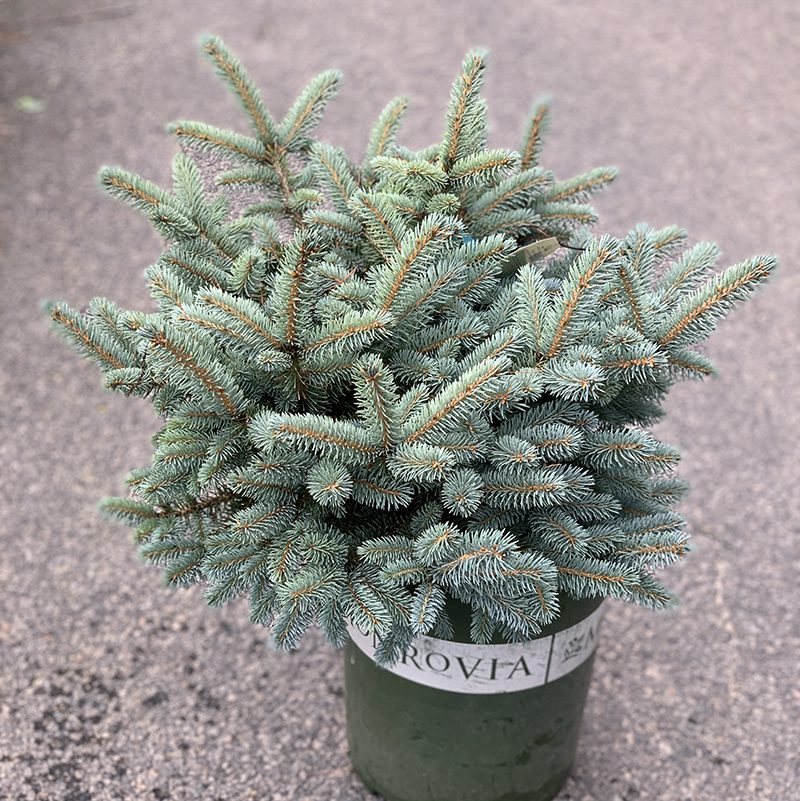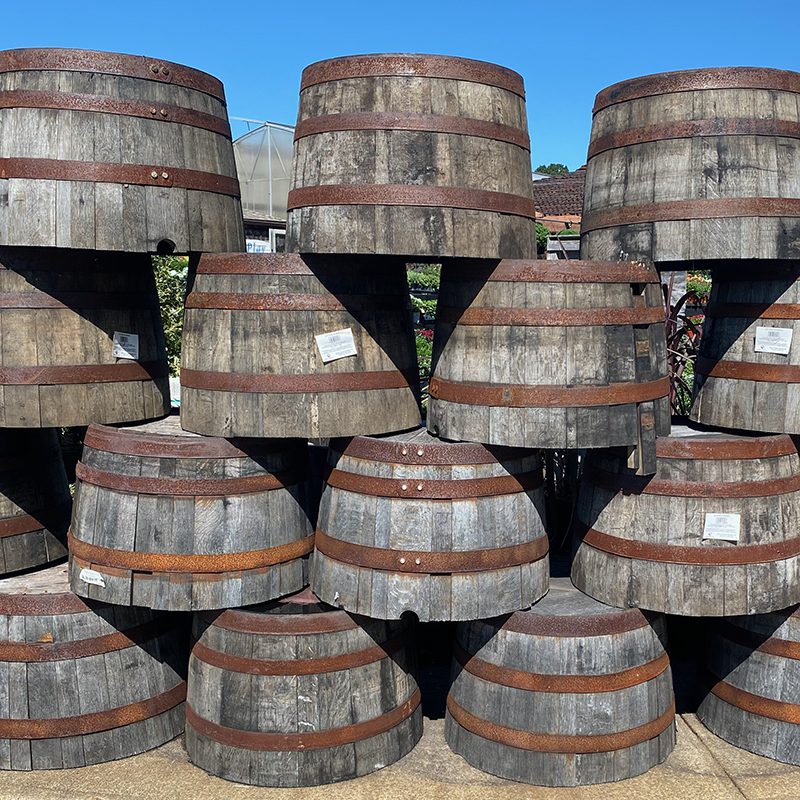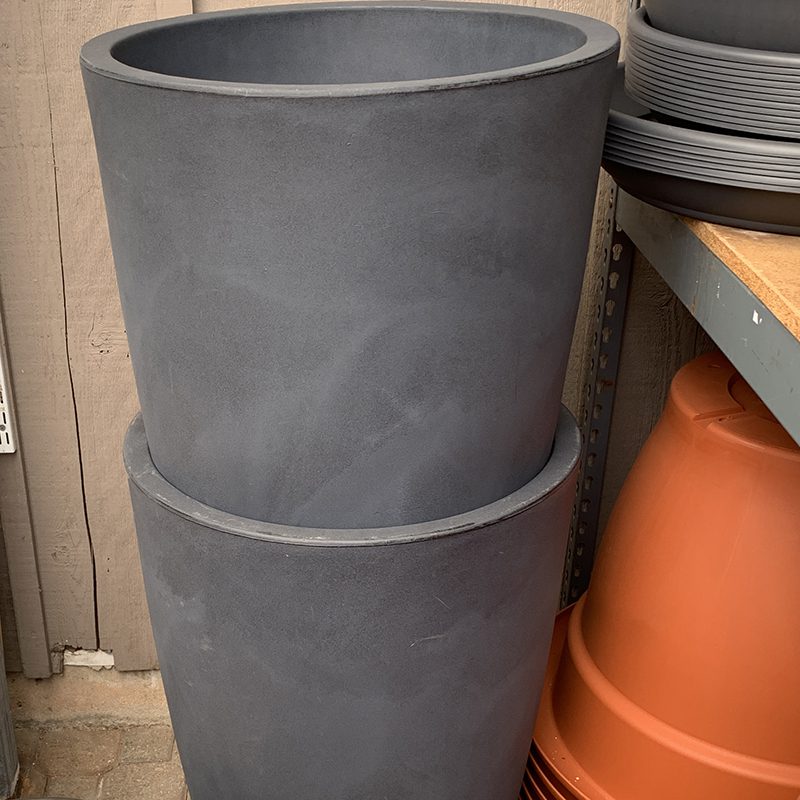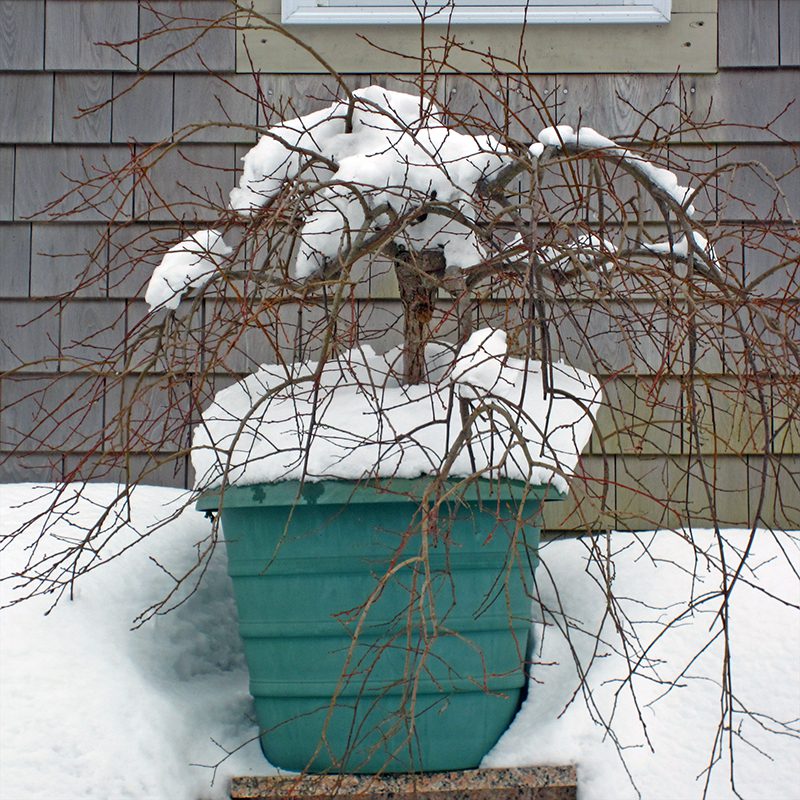Can I Leave a Shrub or Tree in a Pot All Winter?
Can I Leave a Shrub or Tree in a Pot All Winter?
Do you have plants that you’ve enjoyed in containers all summer, and you wonder if they will live if you leave them outside all winter? Or perhaps you have shrubs or trees you bought but haven’t yet planted, and you’re wondering if you need to put them in the ground or if they’ll live as is until spring. There is no one answer because it depends on the type of plant and what the pot is made of. Here are guidelines to help you decide what to do.
How hardy is the plant?
A general rule is that in order to live through the winter in a pot, the plant should be hardy two zones colder than where you are. Here on Cape Cod we consider ourselves in a warm Zone 6, so plants in containers should be hardy in a Zone 4 if you leave them outdoors through the cold season. You see, the soil in pots gets about 20 degrees colder than ground temperature, so the plants need to withstand that level of freezing. If you’re unsure what zone your plants are hardy in, Google the plants’ names and the words “hardiness zone.”

What is the container made of?
Clay and ceramic pots are likely crack in the winter; as the soil expands and contracts, it is apt to break the pot. Glazed ceramics often shed their glazing, so those should not be left outdoors. Containers that are wood, metal, plastic or fiberglass are fine through winter temperatures, although sometimes the materials will age or fade when they are in the sun.


How about the plants I purchased this fall?
If you have pots of plants that were purchased this year, and you’ve not yet planted them, you might be wondering if you should hurry to get them into the ground. The best thing would be to get them placed in the right location in your yard, of course. The sooner you do this in the fall, the longer the plants have to grow roots before winter comes. But we all know that sometimes doing what’s “best” just isn’t possible. So here are your options for those things that you aren’t going to get into the ground.
- If your plant is in a small pot – 3 gallons or smaller – either transplant it into a larger container with more soil, or dig a hole and sink that pot in a ground in a temporary location. A vegetable garden is a great place to bury a pot so that the soil all around the container insulates it.
- If your plants are in larger containers, and are hardy in a Zone 4 or below, you can leave it outside as is. Pull them up against the building if possible, in the sun if these are plants that like full sun, or in part-shade if they are evergreens that like shade. It doesn’t matter where you place your deciduous plants since they will drop their leaves in November.
- If your plants aren’t hardy two zones colder than where you are, pull them into an unheated garage or shed in early November. You’ll need to check them for moisture once a week, and water when the soil feels dry. Know that they are likely to break dormancy early when inside, and that’s okay.

Subscribe To Our Newsletter
Sign up for our weekly email about sales and events.
